Precision Machining Technology
3rd Edition
ISBN: 9781337795302
Author: Peter, Hoffman.
Publisher: Cengage Learning,
expand_more
expand_more
format_list_bulleted
Concept explainers
Textbook Question
Chapter 4.3, Problem 2RQ
Briefly define the term cutting speed.
Expert Solution & Answer
Trending nowThis is a popular solution!

Students have asked these similar questions
from this problem a want you to help to draw the shear moment and the bending moment
reaction at a is 1.6 wL (pos)
handwritten solutions only please. correct answers upvoted
1
8
4
Add numbers so that the sum of any
row or column equals .30 Use only
these numbers:
.1.2.3.4.5.6.10.11.12.12.13.14.14
Chapter 4 Solutions
Precision Machining Technology
Ch. 4.1 - Upright drill presses are available in _______ and...Ch. 4.1 - List two general types of upright drill press...Ch. 4.1 - Explain how the size of an upright drill press is...Ch. 4.1 - Briefly describe the term sensitive drill press.Ch. 4.1 - Briefly describe a gang drill press and its...Ch. 4.1 - When would a radial-arm drill press most likely be...Ch. 4.1 - Briefly describe a micro drill press and its...Ch. 4.2 - What are the two main materials used to make...Ch. 4.2 - What two types of shanks are commonly found on...Ch. 4.2 - Name three functions of the flutes on a twist...
Ch. 4.2 - Name two types of flute styles for machine...Ch. 4.2 - Prob. 5RQCh. 4.2 - What is the major difference between counterboring...Ch. 4.2 - What must be used to secure a workpiece to an...Ch. 4.2 - What devices are used to elevate a workpiece to...Ch. 4.2 - If 50 parts measuring 1" I" 3" each needed a...Ch. 4.2 - Which would be the best workholding device for...Ch. 4.2 - Which would be the best workholding device for...Ch. 4.2 - Which would be the best workholding device for...Ch. 4.3 - List five drill press safety guidelines.Ch. 4.3 - Briefly define the term cutting speed.Ch. 4.3 - What unit of measure is used to define cutting...Ch. 4.3 - What is feed, and how is feed stated for drill...Ch. 4.3 - Briefly describe two methods for locating hole...Ch. 4.3 - What is spotting and why is it performed?Ch. 4.3 - What is pecking, or peck drilling?Ch. 4.3 - Briefly contrast the speed and feed differences...Ch. 4.3 - What drill press component can be used to control...Ch. 4.3 - Calculate feed depth for a 90-degree countersink...Ch. 4.3 - Calculate feed depth for an 82-degree countersink...Ch. 4.3 - What benefit does tapping on the drill press offer...Ch. 4.3 - How many turns must a 1/4-20 tap be turned into a...Ch. 4.3 - Prob. 14RQ
Knowledge Booster
Learn more about
Need a deep-dive on the concept behind this application? Look no further. Learn more about this topic, mechanical-engineering and related others by exploring similar questions and additional content below.Similar questions
- Uppgift 2 (9p) I77777 20 kN 10 kN/m 4 [m] 2 2 Bestäm tvärkrafts- och momentdiagram för balken i figuren ovan. Extrempunkter ska anges med både läge och värde i diagrammen.arrow_forward**Problem 8-45.** The man has a mass of 60 kg and the crate has a mass of 100 kg. If the coefficient of static friction between his shoes and the ground is \( \mu_s = 0.4 \) and between the crate and the ground is \( \mu_c = 0.3 \), determine if the man is able to move the crate using the rope-and-pulley system shown. **Diagram Explanation:** The diagram illustrates a scenario where a man is attempting to pull a crate using a rope-and-pulley system. The setup is as follows: - **Crate (C):** Positioned on the ground with a rope attached. - **Rope:** Connects the crate to a pulley system and extends to the man. - **Pulley on Tree:** The rope runs over a pulley mounted on a tree which redirects the rope. - **Angles:** - The rope between the crate and tree forms a \(30^\circ\) angle with the horizontal. - The rope between the tree and the man makes a \(45^\circ\) angle with the horizontal. - **Man (A):** Pulling on the rope with the intention of moving the crate. This arrangement tests the…arrow_forwardplease solve this problems follow what the question are asking to do please show me step by steparrow_forward
- please help me to solve this problem and determine the stress for each point i like to be explained step by step with the correct answerarrow_forwardplease solve this problem for me the best way that you can explained to solve please show me the step how to solvearrow_forwardplese solbe this problem and give the correct answer solve step by step find the forces and line actionarrow_forward
- please help me to solve this problems first write the line of action and them find the forces {fx=0: fy=0: mz=0: and them draw the shear and bending moment diagram. please explain step by steparrow_forwardplease solve this problem step by step like human and give correct answer step by steparrow_forwardPROBLEM 11: Determine the force, P, that must be exerted on the handles of the bolt cutter. (A) 7.5 N (B) 30.0 N (C) 52.5 N (D) 300 N (E) 325 N .B X 3 cm E 40 cm cm F = 1000 N 10 cm 3 cm boltarrow_forward
arrow_back_ios
SEE MORE QUESTIONS
arrow_forward_ios
Recommended textbooks for you
 Precision Machining Technology (MindTap Course Li...Mechanical EngineeringISBN:9781285444543Author:Peter J. Hoffman, Eric S. Hopewell, Brian JanesPublisher:Cengage Learning
Precision Machining Technology (MindTap Course Li...Mechanical EngineeringISBN:9781285444543Author:Peter J. Hoffman, Eric S. Hopewell, Brian JanesPublisher:Cengage Learning Welding: Principles and Applications (MindTap Cou...Mechanical EngineeringISBN:9781305494695Author:Larry JeffusPublisher:Cengage Learning
Welding: Principles and Applications (MindTap Cou...Mechanical EngineeringISBN:9781305494695Author:Larry JeffusPublisher:Cengage Learning

Precision Machining Technology (MindTap Course Li...
Mechanical Engineering
ISBN:9781285444543
Author:Peter J. Hoffman, Eric S. Hopewell, Brian Janes
Publisher:Cengage Learning

Welding: Principles and Applications (MindTap Cou...
Mechanical Engineering
ISBN:9781305494695
Author:Larry Jeffus
Publisher:Cengage Learning
The Most Common Metal Machining Processes (Metal Machining Video 1); Author: Sofeast Ltd;https://www.youtube.com/watch?v=uxVJ3qtezGw;License: Standard YouTube License, CC-BY
Machining process and Machine Tools; Author: Amar Gandhi;https://www.youtube.com/watch?v=X2mUJ8baaE0;License: Standard Youtube License